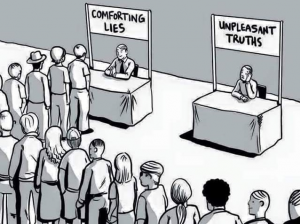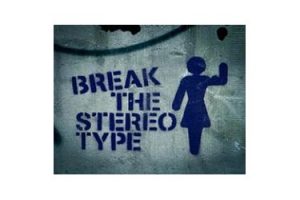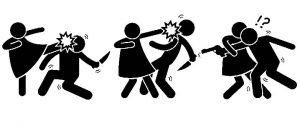Top Artifacts
Artifact 5

https://www.cartoonstock.com/directory/b/birds_of_a_feather_flock_together.asp
This activity was the first activity we had to complete for the archive. We were to ask individuals to rank either “similarly leads to attraction” or “opposites attract”. Then we were to see if the individuals believed the statement to be true. I found it interesting that people can find reasons to justify their belief even when it may not be true. I have learned that people are drawn to individuals who are similar to themselves. This is because someone we assume to be similar to us, in theory, would be an individual we would like. The similarity could be based on one’s appearance, upbringing, or ideals. The image above illustrated the idea “birds of a feather flock together” otherwise known as the similarity-attraction effect.
Artifact 4

https://medium.com/@reyhs/cognitive-dissonance-and-the-lies-we-tell-ourselves-4270a2db30a0
During class we did an activity were we rated certain situations, then at the end we were asked to rate how often we engage in the situations listed prior. Almost everyone there found inconsistency with their belief and behavior. After these finding we were asked why people behave differently than they belief and what they do when his happens. I learned that the need to reduce inconsistencies between one’s behavior and beliefs is cognitive dissonance. This inconsistency often creates discomfort until resolved, so people often justify their behavior. A personal example would be I know I should not be using plastic bottles. However, if I forget my reusable tumblers I justify my use of water bottles by stating I will refill it multiple times and recycle it when I am finished. Regardless though, the plastic bottle is harmful to the environment. The image above highlights cognitive dissonance, people would rather seek out comfort than accept their faults.
Artifact 3

http://www.newelectronics.co.uk/electronics-technology/break-the-stereotype/189719/
This artifact focused on attitudes, stereotypes, and discrimination. I was asked to assign each ethnicity with two stereotypes that is normally associated with the group, regardless if it was what I personally believed. What I found most interesting about this assignment was that we could then compare are results with answers from different decades. I learned that stereotypes change over time. Which now makes sense because as societal ideals change, so do people’s beliefs. However, I would not have realized how significantly different stereotypes have changed if they comparisons were not available. No one is born with imbedded associations, their experiences and individuals in their life shape them. Also, I learned not all stereotypes are negative, for instance the belief that all Asians are smart, but it can still affect the individual negatively. I decided to use image above because I liked the message it portrays. People should not have to feel they need to adhere to stereotypes, especially if they are negative.
Artifact 2
A: B:
B:
https://deadspin.com/former-nhl-player-suspended-for-his-role-in-youth-hocke-1792786999
This artifact activity was based on aggression and aggressive behavior. The activity described scenarios and then I was to answer if I believe the scenario was a display of aggression or not. Since this activity was done in class, it was interesting to see where people drew the line on what is considered aggressive behavior. In general, people immediately respond to intentional harm and physical harm as aggressive. Photo A is an example of this type if aggression. While, self-defense, duty, and instinctual instances are less likely to be identified as aggressive. Photo B is an example of nonaggressive behavior. In general I learned aggression is dependent on the context of the situation and personal experience people have had in the past.
Artifact 1
My favorite artifact was bases on representative and availability heuristics. We were to observe various news reports and reflect on how it relates to the use of heuristics. Heuristic are mental shortcuts people use to make decisions quickly. They are also often correct, but as demonstrated in Are We Scaring Ourselves to Death, the media can distort reality causing people to make false assumptions about people or events. I particularly found this interesting because after completing this artifact, during the hurricane scare, I saw a news reporter dramatizing his how severe the winds were by acting as though the wind was pushing him backward, but in the background to men are seen walking perfectly fine. The picture along with a link to the exact video is above. This further exemplified to me how easily the media can be convince society to associate acts of terrorism or natural disasters are more prevalent or severe than they are. Which results in people believing that natural disasters are more destructive or lethal than they typically are when using heuristics. Specifically the availability heuristic, which are judgements people make on what examples are available to them.